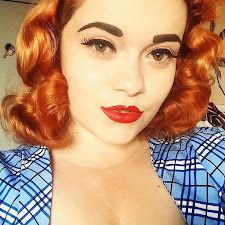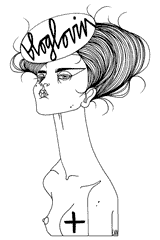The ethereal musings of Belgian designer Dries Van Noten
during Paris Fashion Week provided the fashion sphere with a stimulating
arrangement that proves that brands that are not solely revenue led can still
contribute to the contemporary artistic avenues of high fashion.
Van Noten only brings out two womenswear and two menswear
collections a year, juxtapose to most that often bring out up to six collection
with many showing cruise collections. The enigmatic Belgian embraced the beauty
and quality of fabrics and their processes, mentioning that “It’s not really a
collection, it’s just a lot of nice clothes in very nice fabrics”.
The joy of
his work aesthetic that has gone into producing the collection is subtly
prolonged via a subdued frenzy of gossamer garments that underlined the
vulnerable yet artistic context of the showing.
An element of
the collection that ignited my ‘fan-girl’ notions for the brand lay in the
supposed inspiration. A long time pre-Raphaelite art enthusiast like myself was
thoroughly indulged by the influences that mainly included a painting I have
been smitten of for a substantial period.
John Everett
Millais’s interpretation on Shakespeare’s Ophelia was fully synthesised in the
collection whilst being credible on a ready-to-wear basis. The painting depicts
the tragic female figure of Shakespeare’s Hamlet, upon which she floats upon a
floral ridden river in an attempt to end her life.
The botanical
environment of the fictional femme fatale speaks volumes alongside the sheer
florals paraded in the collection. The movement in her ivory dress as the
current of the water dictates it and the symbolism of each of the flowers adds
immeasurable depth to not only the story but in the imagery that is replicated
by Van Noten.
The wilted
poppies represent death whilst the willow, nettle and daisies are associated
with forsaken love, pain and innocence. The pansies paint the ideology of love
in vain and the chain of violets worn around her neck stand for either
faithfulness, chastity, death of the young or all of the above.
The depth of
inspiration also touched on more of Shakespeare’s prose with A Midsummer
Night’s Dream cited as inspiration as well as the mythical yet contemporary
carefree girl who would whimsically lay her head upon the stone circles of
Glastonbury in the ebony backdrop of a Somerset evening each July.
Nymph-like models serenely engulfed the make-shift mossy
forest floor in golden organza jackets so intricate it looked like they have
been developed by silk worms. Muted rainbows in horizontal patterns were
consistent whilst tiered chiffon dresses with the thinnest of spaghetti straps
brought on an epiphany of hippie optical illusions.
As the finale was upon us, the diaphanous details of each
outfit meshed to create a vivid scene and the models ever so casually lounged
against the grassy peaks as the lighting created a dusky backdrop with a leafy
palette and the sun escaping through the gaps of the faux foliage.
During the frenzied, androgynous and innovative
environment that we have come to know during fashion weeks, Van Noten was a
breath of fresh air as he purely wants to curate beautiful clothes and upon
dissection of his collection, his roots in Antwerp shone through, something I'm sure he would have wanted to have been highlighted






















.jpeg)
.jpeg)
.jpeg)

.jpeg)
.jpeg)
.jpeg)
.jpeg)
.jpeg)
.jpeg)

.jpeg)
.jpeg)
.jpeg)
.jpeg)
.jpeg)
.jpeg)
.jpeg)









































